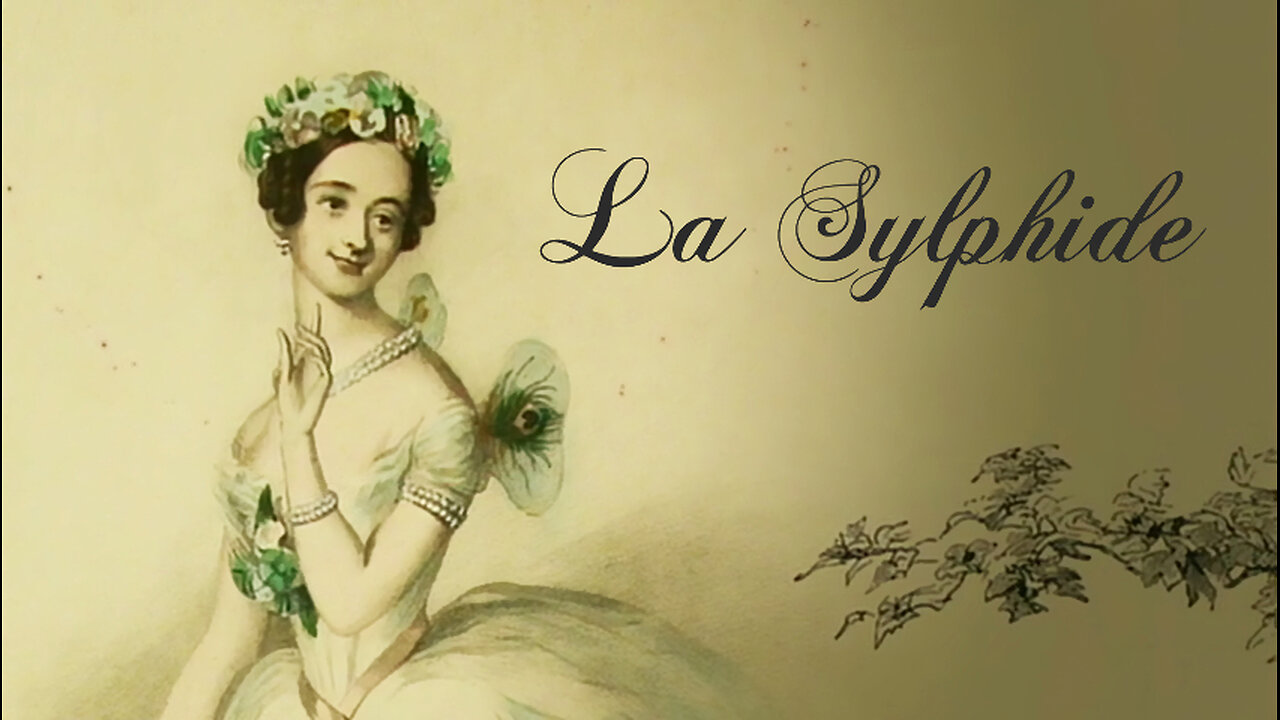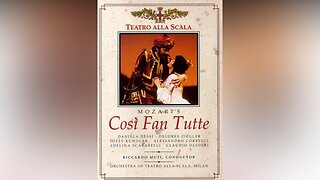Premium Only Content

La Sylphide | Dupont, Ganio (Paris Opera Ballet 2004)
La Sylphide (English: The Sylph; Danish: Sylfiden) is a romantic ballet in two acts. Music by Jean-Madeleine Schneitzhoeffer and libretto by Adolphe Nourrit, based on Charles Nodier's Trilby, ou Le Lutin d'Argail (English: Trilby; or, The Fairy of Argyll).
Cast & Characters:
Aurélie Dupont as La Sylphide (The Sylph, a forest spirit)
Mathieu Ganio as James Ruben (a Scottish farmer)
Mélanie Hurel as Effie (James' fiancée)
Jean-Marie Didière as Old Madge (a village sorceress)
Emmanuel Huff as Gurn (James' friend)
Virginie Rousselière as Effie's mother (an elderly woman)
Isabelle Ciaralova & Gil Isoart: Pas de deux des écossais
Choreography by Pierre Lacotte
after Philippe Taglioni
Corps de Ballet et Orchestre de l'Opéra National de Paris
Conductor: Ermanno Florio
Recorded in July 2004
There were two versions of the ballet; the original choreographed by Filippo Taglioni in 1832, and a second version choreographed by August Bournonville in 1836. Bournonville's is the only version known to have survived and is one of the world's oldest surviving ballets.
On 12 March 1832 the first version of La Sylphide premiered at the Salle Le Peletier of the Paris Opéra with choreography by the groundbreaking Italian choreographer Filippo Taglioni and music by Jean-Madeleine Schneitzhoeffer. Taglioni designed the work as a showcase for his daughter Marie. La Sylphide was the first ballet where dancing en pointe had an aesthetic rationale and was not merely an acrobatic stunt, often involving ungraceful arm movements and exertions, as had been the approach of dancers in the late 1820s. Marie was known for shortening her skirts in the performance of La Sylphide (to show off her excellent pointe work), which was considered highly scandalous at the time.
The ballet's libretto was written by tenor Adolphe Nourrit, the first "Robert" in Meyerbeer's Robert Le Diable, an opera which featured Marie Taglioni in its dance section, Ballet of the Nuns. Nourrit's scenario was loosely based on a story by Charles Nodier, Trilby, ou Le Lutin d'Argail, but swapped the genders of the protagonists — a goblin and a fisherman's wife of Nodier; a sylph and a farmer in the ballet. The scene of Old Madge's witchcraft which opens Act II of the ballet was inspired by Niccolò Paganini's Le Streghe, which in its turn was inspired by a scene of witches from Il Noce di Benevento (The Walnut Tree of Benevento), an 1812 ballet by choreographer Salvatore Viganò and composer Franz Xaver Süssmayr.
In 1892, Marius Petipa mounted a revival of Taglioni's original La Sylphide for the Imperial Ballet, with additional music by Riccardo Drigo. A variation Drigo composed for the ballerina Varvara Nikitina in Petipa's version is today the traditional solo danced by the lead ballerina of the famous Paquita Grand Pas Classique. In 1972, a new version of La Sylphide, based on the Taglioni version, was choreographed and staged by Pierre Lacotte for the Paris Opera Ballet. Since Taglioni's choreography has been irretrievably lost, Lacotte's choreography is based on prints, notes, drawings, and archival materials from the era of the ballet's premiere.
La Sylphide is often confused with the 1909 ballet Les Sylphides, another ballet involving a mythical sylph. The latter was choreographed by Michel Fokine for the Ballets Russes, using music by Frédéric Chopin, as a short performance. Though inspired by La Sylphide, it was meant to be performed as an independent ballet with its own merits.
Bournonville version: The Danish ballet master August Bournonville had intended to present a revival of Taglioni's original version in Copenhagen with the Royal Danish Ballet, but the Paris Opera demanded too high a price for Schneitzhoeffer's score. In the end, Bournonville mounted his own production of La Sylphide based on the original libretto, with music by Herman Severin Løvenskiold. The premiere took place on 28 November 1836,[4] with the prodigy Lucile Grahn and Bournonville in the principal roles.
The Bournonville version has been danced in its original form by the Royal Danish Ballet ever since its creation and remains one of Bournonville's most celebrated works.
-
 1:32:14
1:32:14
Adaneth - Arts & Literature
14 days agoMozart: Così fan tutte Act 1 | Dessi, Ziegler, Corbelli, Kundlak - Muti (La Scala 1989-ENG+ITA SUB)
36 -
 1:08:09
1:08:09
Donald Trump Jr.
6 hours agoFBI Dream Team, Plus Taking Your Questions Live! | Triggered Ep.219
94.2K146 -
 LIVE
LIVE
Akademiks
5 hours agoDrake and PartyNextDoor '$$$4U' Album Sells 250K first week. BIG AK IS BACK.
2,950 watching -
 3:12:08
3:12:08
MyronGainesX
4 hours ago $14.83 earnedDan Bongino Named As Deputy Director Of FBI And CPAC Recap
33.8K15 -
 DVR
DVR
vivafrei
4 hours agoBarnes Live from Seattle - Defending Benshoof in a Case that is CRAY CRAY!
50.3K22 -
 2:12:12
2:12:12
Robert Gouveia
4 hours agoLiberals EXPLODE over Elon's Email; Lawsuits FLY; Sanctions?? Congrats Dan!
30.7K9 -
 1:33:36
1:33:36
Redacted News
4 hours agoBREAKING! PUTIN LAUNCHES MASSIVE OFFENSIVE IN UKRAINE AS EUROPEAN LEADERS PUSH FOR MORE WAR
89K185 -
 44:39
44:39
Kimberly Guilfoyle
5 hours agoBetter Days Ahead for the FBI, Live with Asm Bill Essayli & John Koufos | Ep.199
43.1K24 -
 1:40:29
1:40:29
In The Litter Box w/ Jewels & Catturd
1 day agoWhat Did You Do Last Week? | In the Litter Box w/ Jewels & Catturd – Ep. 748 – 2/24/2025
92.6K33 -
 23:34
23:34
Stephen Gardner
5 hours ago🔥CNN PANICS over $5000 DOGE Dividend | Trump Orders bigger Audits
54.7K118